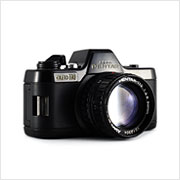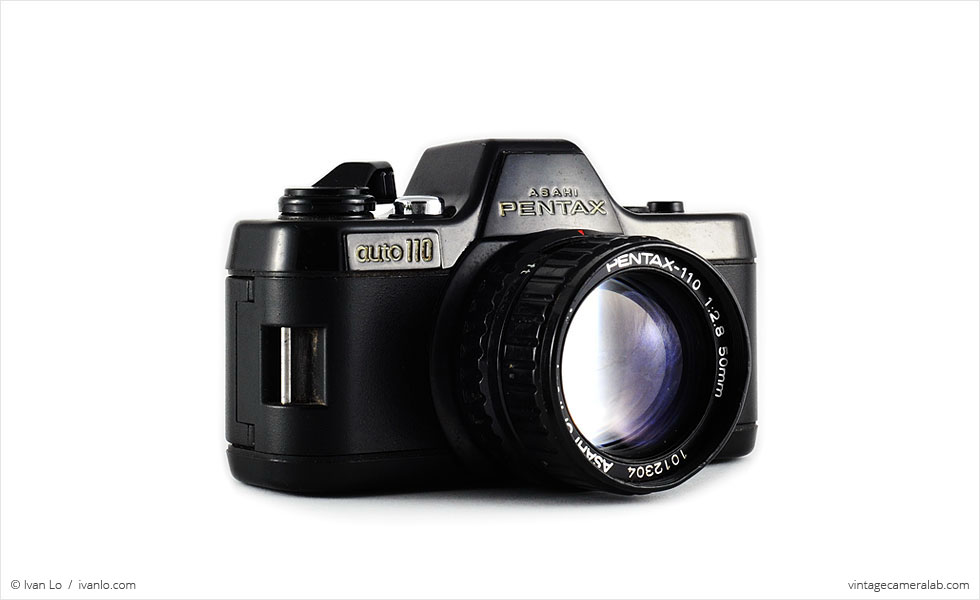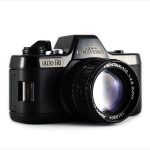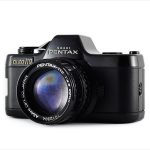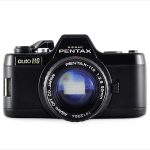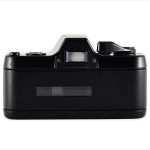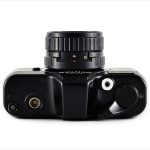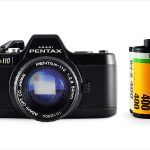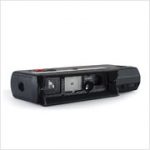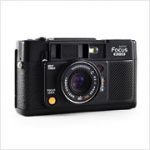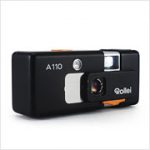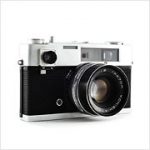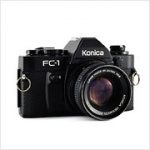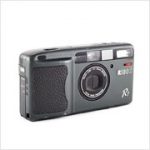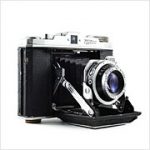Pentax Auto 110 Specifications
| Manufacturer: | Asahi Optical Co., Ltd. |
| Origin: | Japan |
| Made in: | Japan |
| Introduced: | 1979 |
| Type: | Single Lens Reflex, Subminiature |
| Lens Mount: | Pentax PTX110-Mount |
| Format: | 110 Film |
| Dimensions: | 12.4 x 5.4 x 3.2 cm (body only) |
| 12.4 x 5.4 x 5.7 cm (with lens) |
Pentax Auto 110 Overview
The Pentax Auto 110 is the smallest single lens reflex camera ever made and the only camera with interchangeable lenses ever produced for the 110 film cartridge. A true camera system, the Auto 110 has six available lenses: 18mm, 24mm, 50mm, 70mm, 18mm fixed-focus, and 20-40mm zoom (all f/2.8), two external flashes, an electric film winder, and a slew of macro adapters, filters, diopters, and lens hoods. A third party 1.7x teleconverter was also produced by the German company Soligor.
Curiously, Pentax-110 lenses do not have aperture blades and instead rely on the body’s twin-bladed shutter assembly to set f-stops, a setup that apparently keeps the lenses and the entire package compact. With exposure being fully automatic, that means that there are absolutely no manual controls available besides focus and hardly any controls at all. While there’s nothing on the front of the camera besides a lens release lever, the top plate has sockets for an external flash unit, the silver shutter button with cable release socket, and the film advance lever which actually requires two pulls to reset the shutter. Metering is accomplished via a relatively sophisticated TTL (through-the-lens) system which dictates shutter speeds ranging from 1 to 1/750 seconds but is only compatible with ISO 100 and ISO 400 films.
I bought this Pentax Auto 110 on eBay for about $20 so I could use the included 18mm, 24mm, and 50mm lenses with an adapter on my Sony NEX-5N. The lenses are small but sharp and they definitely keep my camera wonderfully pocketable, especially the tiny 24mm. Unfortunately, the other three lenses (18mm fixed-focus, 70mm, and 20-40mm zoom) which were introduced years later are much rarer and, as a result, much more expensive.
Find your very own Pentax Auto 110 on eBay.
McKeown, James M. and Joan C. McKeown’s Price Guide to Antique and Classic Cameras, 2001-2002. (Grantsburg, WI, USA: Centennial Photo Service, 2001), p 73.
